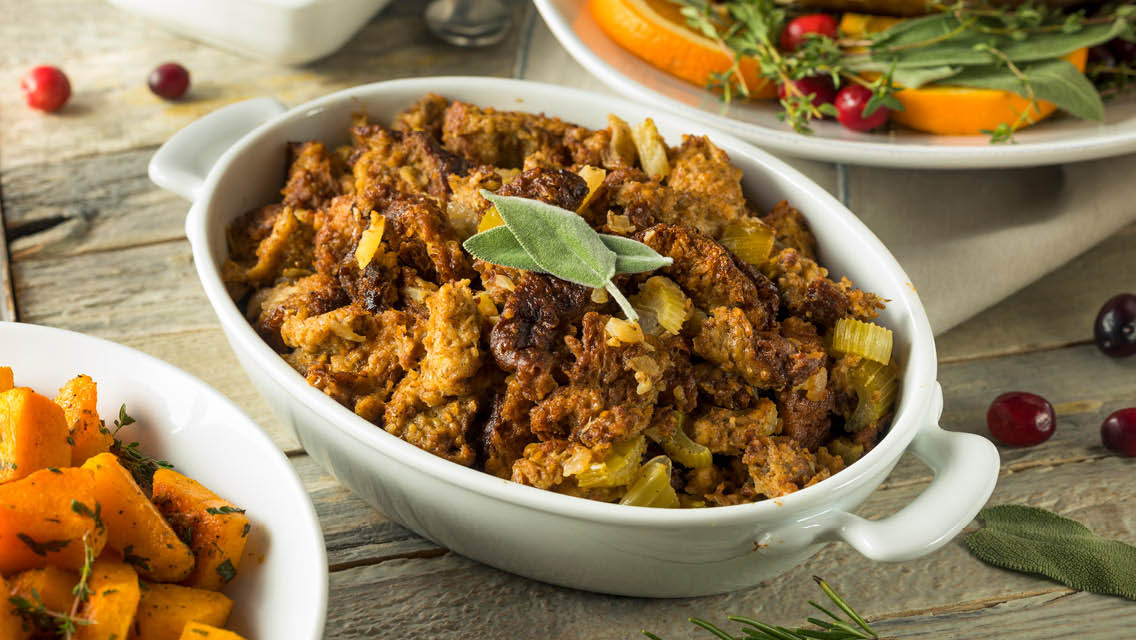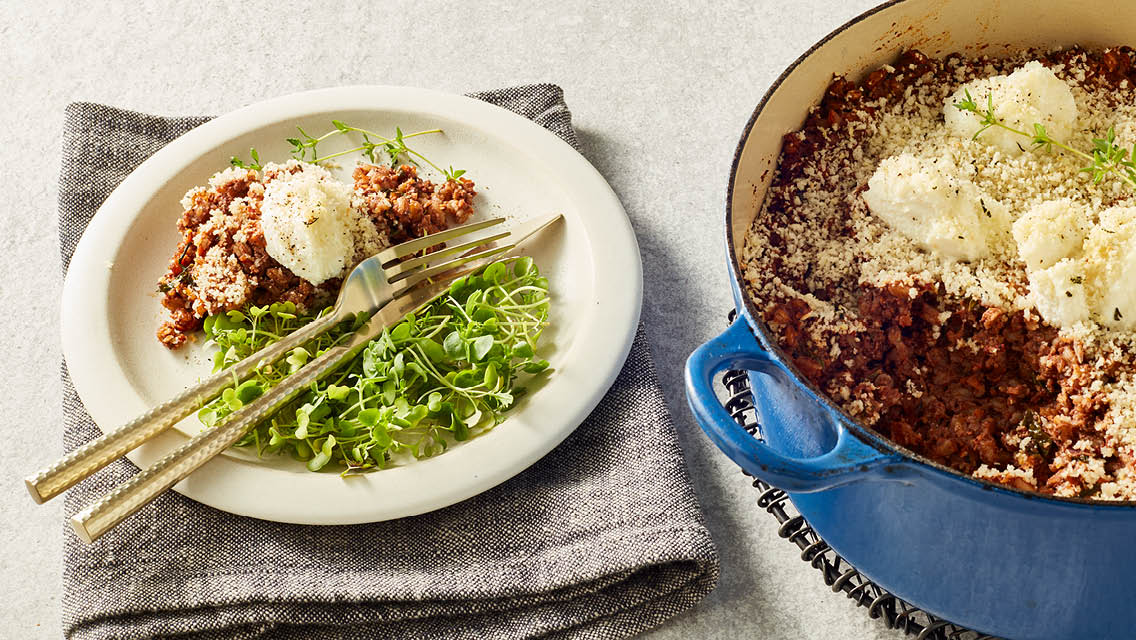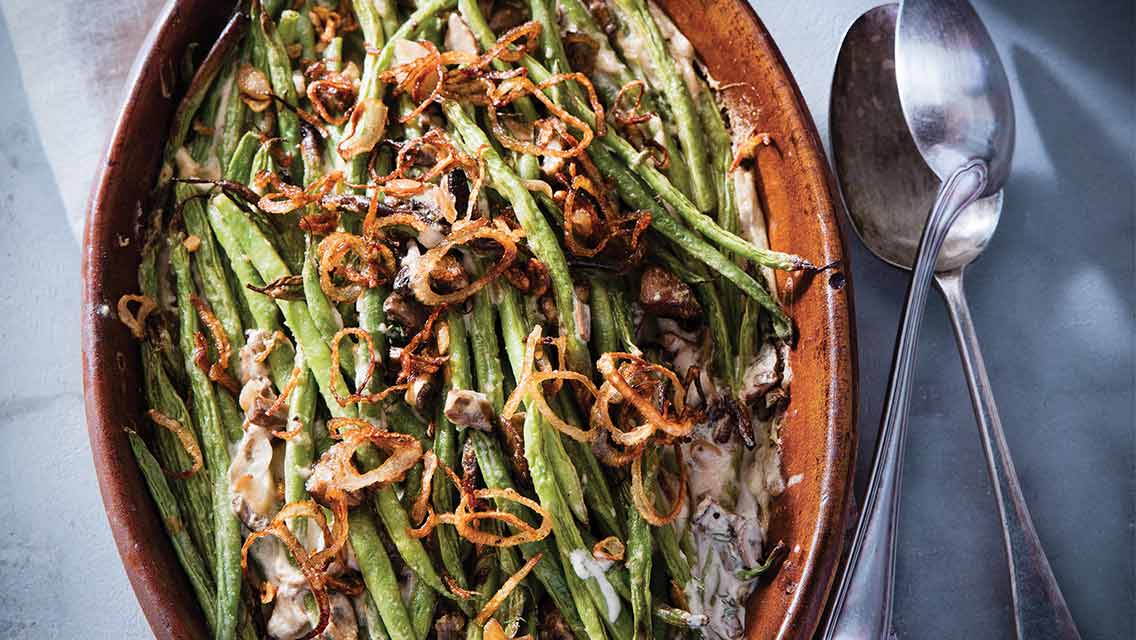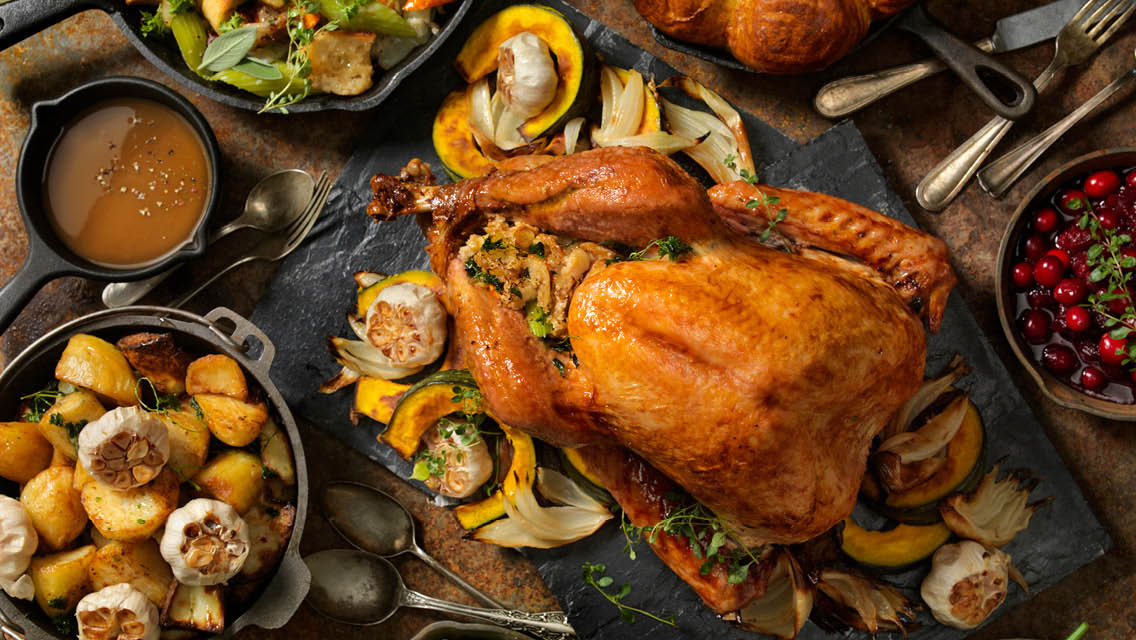A generation (or two or three) ago when we were all culturally and physically connected to the farm, rather than to the Food Network, dining was about unbridled, unpredictable celebration. You didn’t just serve a main course accompanied by the token salad and customary peas-and-carrots mix. You laid out a spread made up of eclectic side dishes — generous portions of rustic vegetables that blended all sorts of tastes and textures. These dishes, testaments to the land’s fertility, never played second fiddle and could easily be meals on their own.
Of course, this tradition of passing around heaping platters that pay homage to the harvest still exists today. But now the ritual is confined to that frantic six-week marathon between Thanksgiving and New Year’s known as “the holidays.” And those festive “sides” of yore have been replaced by seasonal menus as predictable as they are unhealthy: the ever popular marshmallow-glazed sweet potatoes swimming in butter and sugar; oyster chowder fortified with heavy cream; and, of course, Grandma’s classic green bean casserole filled to the brim with canned cream of mushroom soup and topped with a crown of French’s fried onion crisps.
It doesn’t have to be this way.
There’s no rule that says you can’t buck convention and serve up holiday sides the way they used to be — hearty and wholesome. It doesn’t have to break the bank or your back, either. In fact, just roasting a basket of wild mushrooms and serving them alongside a gratin of spaghetti squash, a bowl of sweet potato hash, a platter of sweet and sour beets with pearl onions, or curry-glazed carrots is more than enough to create a unique and spectacular feast.
What’s more, you can indulge without unraveling a year’s worth of sensible eating. The best turn-back-the-clock side dishes rely on farm-fresh produce and natural ingredients like herbs, spices and oils (no processed soup, please) that bring out individual flavors rather than hiding them under multiple layers of sugar and fat. So you can go back for seconds or even thirds without worrying about “filling up.” And that alone is worth celebrating.
Fare Better
Try these tips at your holiday gathering.
- Use a spray-mist olive oil dispenser to season pans or glaze poultry before cooking. Roasting vegetables with just a spritz of oil will also save you from the butter-blahs.
- Skip the butter or cream you use to soften mashed potatoes or root vegetable purée and opt for vegetable or chicken stock instead. You can eliminate a lot of the fat without sacrificing taste or texture.
- Mixing together butter and flour into a roux (a roux is a mixture of fat (especially butter) and flour used in making sauces) isn’t the only way to add texture: Add roasted puréed carrots to soups or gravies to increase thickness.
- Sour cream has half the calories and fat of heavy cream; yogurt has even less. As a condiment for roasted or sautéed vegetables, try seasoning some sour cream or yogurt with ground spices like cumin or coriander.
- Welcome guests with small coffee cups filled with mushroom or beef consommé. These and other like soups will warm the body after a cold drive and sate the appetite just enough to stave off the temptation to overload your dinner plate.
- Never underestimate people’s propensity to snack. Place bowls of fruits, nuts and mixed vegetables around the house for your guests, a healthier choice than the standard chips and dips, which are not only boring but loaded with fat and calories.
- Garnish drinks with ice cubes made from distilled water and infused with star anise buds, raspberries or pomegranate seeds. Regular water has too much oxygen in it to freeze with any degree of clarity.
Recipes
Curry-Glazed Carrots
Serves 6 to 8
- 2 lbs. carrots, peeled, trimmed and sliced at a 45-degree angle and 1/3-inch thick
- 2 tbs. honey
- 2 tbs. white wine vinegar
- 2 tbs. fresh orange juice
- 1/2 cup chicken or vegetable stock
- 1 tsp. lemon juice
- 1 tbs. toasted sesame seeds
- 1 tbs. curry powder
- 1 golf-ball size piece of fresh ginger, sliced
- Pinch of red chili flakes
Directions
- Combine all ingredients in a sauté pan over high heat.
- When simmering, turn heat down to medium, cover and cook for three minutes. Remove lid and, while tossing regularly, let liquid evaporate until it reduces into a nice glaze.
- Season with sea salt and serve.
Sweet and Sour Beets With Pearl Onions
Serves 6 to 8
- 2 lbs. medium-size red beets
- 1 lb. pearl onions, trimmed and free of skins
- 1 tbs. vegetable oil
- 2 tbs. butter
- 1/3 cup sherry wine or red wine vinegar
- 1/4 cup honey
- 1/2 cup apple cider
- 2 tbs. coarsely chopped fresh tarragon leaves
- Few pinches ground allspice
- 1 tsp. black peppercorns
- 1 fresh bay leaf
Directions
- Rub beets with the oil, and roast at 350 degrees for 45 minutes to an hour until just crisp-tender. Cool, peel and quarter with a paring knife. Set aside.
- Bring remaining ingredients, except the onions, to a light boil in a nonreactive sauté pan over medium heat and cook until reduced by one-third. When reduced, add the beets and onions, and then continue cooking until pan is essentially “dry” and vegetables are glazed.
- Season with sea salt and serve.
This article originally appeared as “Holiday Health on the Side” in the December 2004 issue of Experience Life.





This Post Has 0 Comments